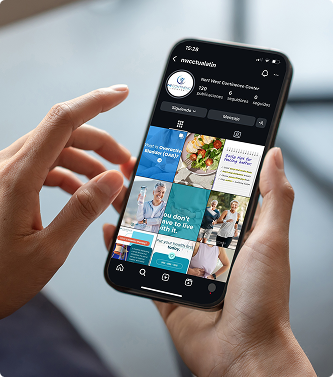How Can I Stop My PTSD Symptoms?

Post-traumatic stress disorder (PTSD) is a mental health condition that develops in some people after experiencing or witnessing a traumatic event. The symptoms can be intense and disruptive — but with the right strategies and support, they can be managed effectively.
At Spinal Diagnostics, we recognize that PTSD can affect both mental and physical health. While we specialize in physical pain, we understand the deep connection between emotional trauma and bodily symptoms. If you’re struggling with PTSD, here are some key ways to start regaining control over your life.
Seek Professional Help
The most important step you can take is to speak with a mental health professional. PTSD is complex, and a trained therapist or psychiatrist can guide you through treatment options such as:
- Cognitive behavioral therapy (CBT): Helps reframe negative thinking patterns
- Exposure therapy: Gradual, guided confrontation of trauma-related memories or environments
- EMDR (eye movement desensitization and reprocessing): A specialized technique used for trauma recovery
- Medication: Antidepressants or anti-anxiety drugs may help stabilize your mood
PTSD isn’t something you have to navigate alone. A comprehensive plan involving therapy, medication, or both can make a significant difference.
Establish a Support Network
Having people you can talk to — whether friends, family, or a support group — can ease the burden of PTSD. Community support helps normalize your experiences and reduces feelings of isolation.
If you’re not comfortable talking with people in your immediate circle, online support communities or local PTSD support groups may be helpful alternatives.
Practice Self-Care and Grounding Techniques
PTSD often triggers overwhelming emotions. Incorporating self-care strategies into your daily life can help bring stability and calm. Some effective techniques include:
- Deep breathing and mindfulness meditation
- Maintaining a regular sleep schedule
- Eating a balanced, nourishing diet
- Engaging in light physical activity, such as walking or yoga
- Practicing grounding techniques like focusing on your five senses
When symptoms arise, grounding techniques can help redirect your focus to the present moment, reducing panic or flashbacks.
Address Physical Symptoms Linked to PTSD
PTSD can manifest physically, often as chronic pain, muscle tension, or sleep disruption. At Spinal Diagnostics, we offer pain management services that may complement your mental health treatment — such as nerve blocks or neuromodulation therapies — especially if your PTSD is contributing to persistent physical discomfort.
Hope and Healing Are Possible
Managing PTSD is not about erasing your past — it’s about gaining the tools to move forward. With professional help and the right resources, you can ease your symptoms and reclaim a fulfilling life.
If you’re ready to take the next step in addressing the physical and emotional effects of PTSD, contact us today. We’re here to support your healing journey.

